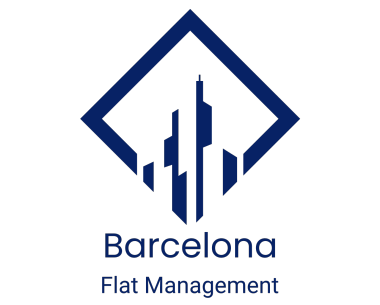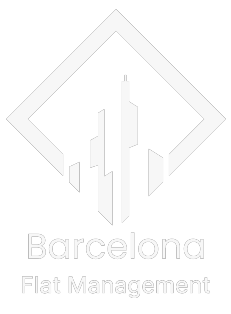Nestled in the heart of Catalonia, the vibrant city of Barcelona offers a unique blend of rich history, stunning architecture, and a lively culture, making it a highly desirable residential destination.
This article explores the current trends in Barcelona’s rental market, emphasizing the key differences and considerations between furnished and unfurnished flats. As these trends play a significant role for renters, landlords, and real estate professionals alike, a deeper understanding of these aspects is crucial for anyone navigating the city’s diverse and appealing housing landscape.
The Current State of Barcelona’s Rental Market
Barcelona’s rental market is a dynamic and multifaceted sector, reflecting the city’s popularity as both a tourist destination and a hub for international business. Recent studies indicate a nuanced landscape: while average rent prices in central neighborhoods like Eixample and Gràcia hover around €1,200 to €1,500 per month for a standard two-bedroom apartment, more peripheral areas such as Les Corts and Sant Andreu offer slightly more affordable options. This variation in rent is influenced by factors like proximity to tourist attractions, availability of amenities, and connectivity to public transportation.
The influx of tourism has notably played a dual role, boosting demand for short-term rentals, which in turn impacts long-term rental availability and pricing. Economic factors, including the rise in employment opportunities within the tech sector, have attracted a diverse population to the city, further stimulating the rental market.
Additionally, local regulations, such as restrictions on short-term rental platforms and tenant protection laws, are continually reshaping the landscape. These regulations aim to balance the needs of residents and tourists, ensuring sustainable growth in the rental market while preserving the city’s unique character.
Furnished Flats in Barcelona: Convenience vs. Cost
In Barcelona, the demand for furnished flats is predominantly driven by specific groups such as expatriates, students, and those seeking short-term rentals. Expats often favor furnished flats due to the convenience they offer, especially for those in the city on temporary work assignments or who are in the process of relocating permanently. Similarly, international students and short-term renters find these flats appealing as they eliminate the hassle and expense of purchasing furniture for a temporary stay. The benefits of furnished flats extend beyond mere convenience; they often come with shorter lease terms, offering flexibility to those unsure of their long-term plans in the city.
Cost-wise, furnished flats typically command a premium over their unfurnished counterparts. For instance, in trendy neighborhoods like El Born or La Barceloneta, a furnished one-bedroom apartment might cost between €1,300 to €1,600 per month, while an unfurnished apartment in the same area might range from €1,000 to €1,300. This price difference reflects the added value of furnishings and the convenience factor. However, in more residential areas like Sants or Sant Antoni, the price gap between furnished and unfurnished options narrows, providing more affordable options for those willing to live slightly outside the city center. The decision between a furnished or unfurnished flat often boils down to balancing the higher immediate cost against the convenience and flexibility furnished options provide, making them a pragmatic choice for many living in Barcelona’s dynamic urban landscape.
Unfurnished Flats: A Blank Canvas for Long-Term Tenants
Unfurnished flats in Barcelona hold a particular allure for long-term residents and those seeking to immerse themselves in a more authentic, local living experience. These spaces are akin to blank canvases, offering tenants the freedom to personalize their homes according to their tastes and needs. This aspect of customization is a significant draw, allowing individuals to create a living space that truly feels like their own, something that furnished flats may not always offer. The appeal of unfurnished flats extends to financial benefits as well. Generally, they come with lower rent costs compared to furnished counterparts, making them a financially attractive option for those willing to invest in furniture and home essentials.
However, this cost-effectiveness comes with its own set of challenges. The initial outlay for furniture can be substantial, particularly for those who are setting up a home for the first time. Additionally, the commitment involved in purchasing furniture implies a longer-term investment in staying in one place, which might not be ideal for everyone. For expats or individuals who plan to stay in Barcelona for an extended period, these flats offer an opportunity to settle into the rhythm of the city, but for those with more transient lifestyles, the convenience of furnished flats might outweigh the appeal of personalization. In essence, choosing an unfurnished flat involves weighing the desire for a personalized home against the practicalities of furniture acquisition and the commitment to a longer-term residence in the vibrant Catalan capital.
Future Trends: What’s Next for Barcelona’s Rental Market?
Barcelona’s rental market is poised for transformative changes influenced by emerging trends and evolving lifestyles. A significant shift is the rise of co-living spaces, catering to the growing demographic of young professionals, digital nomads, and remote workers. These communal living arrangements blend the convenience of furnished apartments with the added value of community and shared facilities, addressing both social and practical needs. The remote work revolution, accelerated by recent global events, is also reshaping rental preferences. With more people working from home, the demand for larger spaces and home offices is likely to increase, potentially impacting the balance between furnished and unfurnished flats. Unfurnished flats might see a surge in popularity, as tenants seek to create personalized work-friendly environments.
Additionally, Barcelona’s rental market could see significant changes due to evolving laws and regulations. The local government is actively working on policies to regulate rental prices and ensure affordable housing, which might lead to a stabilization of rental costs and potentially influence the market’s direction. These trends and regulatory changes collectively hint at a more diversified and tenant-centric rental market in Barcelona in the coming years.
Navigating Barcelona’s Evolving Rental Landscape
In conclusion, Barcelona’s rental market presents a dynamic interplay between the demand for furnished and unfurnished flats, each catering to distinct needs and lifestyles. While furnished flats offer convenience and flexibility, particularly appealing to short-term residents, expats, and students, unfurnished flats attract long-term tenants with their lower rent and customization possibilities. The market is also evolving with trends like co-living spaces and remote work, indicating a shift towards more diversified living options.
Understanding these nuances and the unique advantages and challenges each type of accommodation presents is crucial for making informed rental decisions. As the Barcelona rental landscape continues to evolve, driven by changing regulations and emerging trends, staying informed and adaptable is key. The future of Barcelona’s rental market holds exciting prospects, and navigating it successfully requires both awareness and flexibility.













